Continuing from the previous section on SELECTING FEATURES, we have three layers of data added to our current QGIS project, and have done a spatial select to find 153 features.
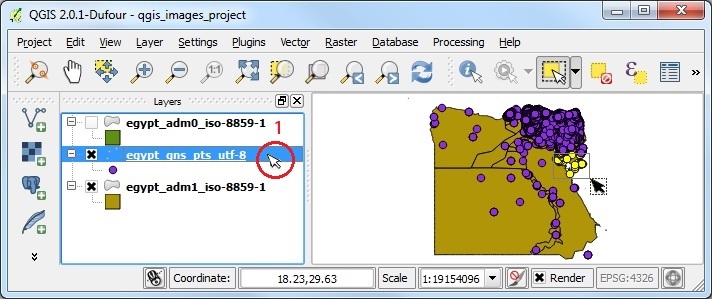
Right click on the active points layer, with the selected features, and OPEN THE ATTRIBUTE TABLE. Then scroll to the right until you can see the FULL_NAME_1 column.
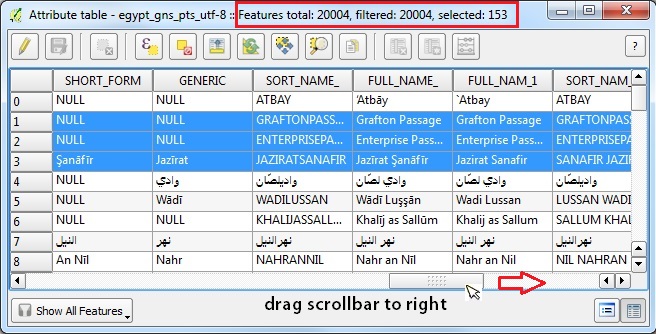
The simplest way to search for a word (or string) in QGIS 2.0 is to use Column Filter. From the bottom left drop-down menu, select COLUMN FILTER. Scroll right to the Columns List, then select the FIELD NAME you want to search in.
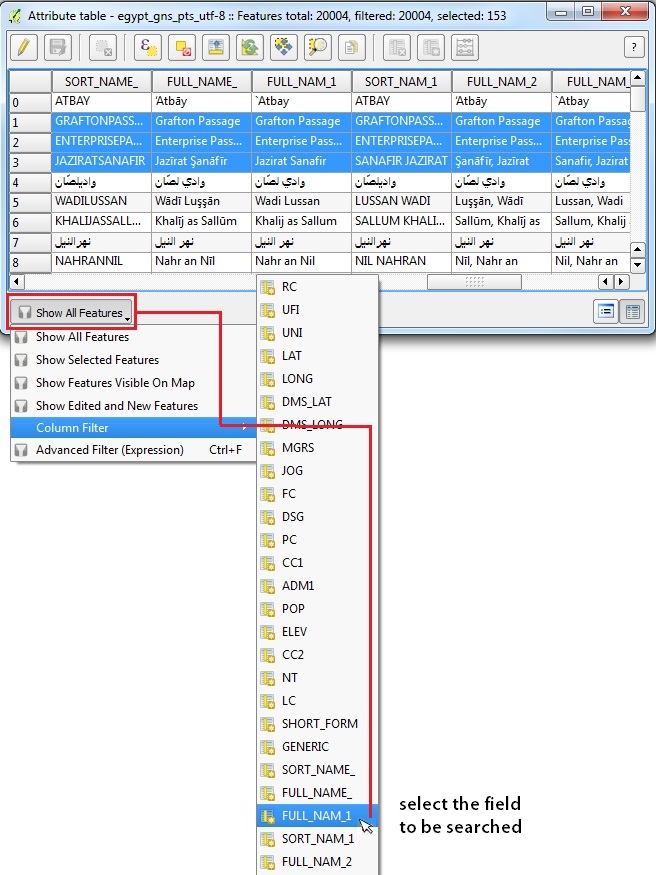
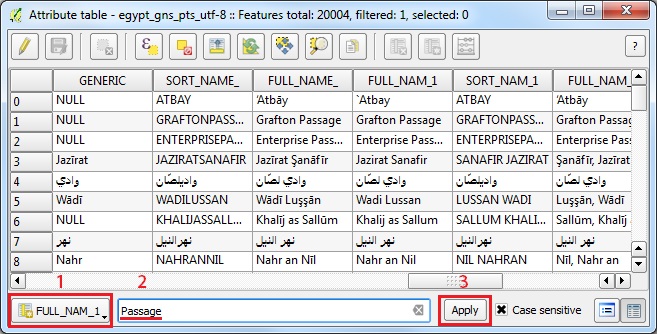
Only two records were found that contained the string Passage. If you change the query string to Pass and hit APPLY again, an additional row will be found, Daiqa Pass. This means that the search is essentially allowing for any characters to precede or to follow the search term (the equivalent of a wildcard like %Pass% )
Another way to assemble queries is QUERY BUILDER. First DESELECT ALL the features, then Right-click on the points layer (egypt_gns) and go to PROPERTIES, then the GENERAL TAB. You may need to scroll down to the lower right to launch QUERY BUILDER.
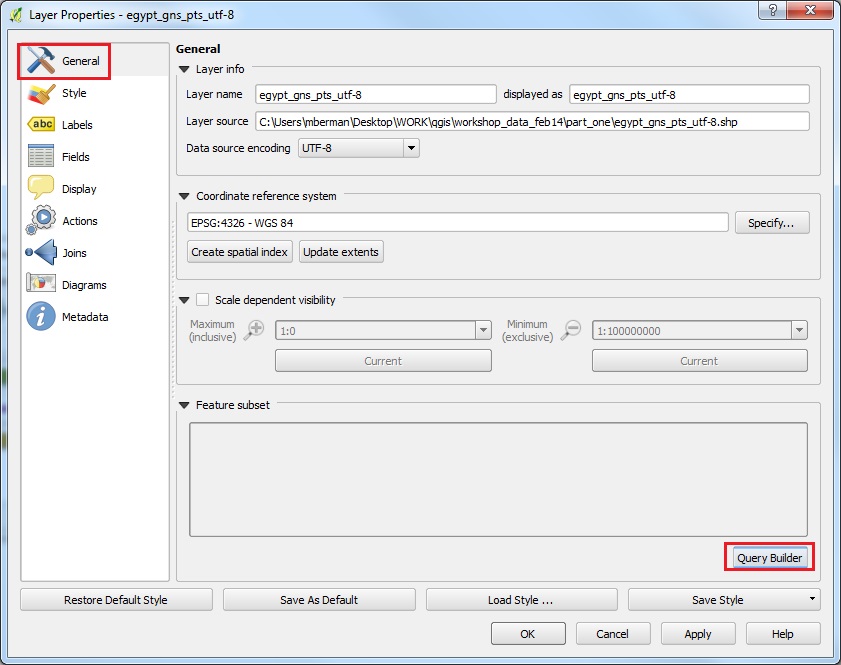
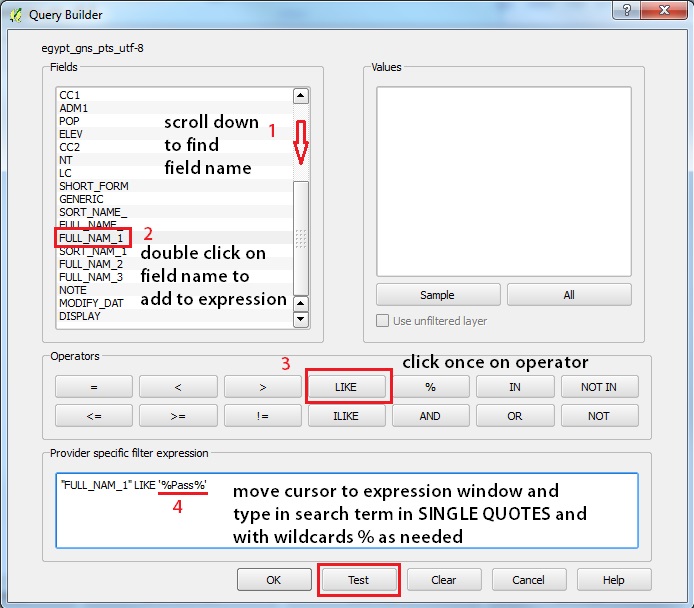
Clicking OK will clear the TEST results, then click APPLY and OK. Take a look at your map view and attribute table, which will show the rows selected using QUERY BUILDER.
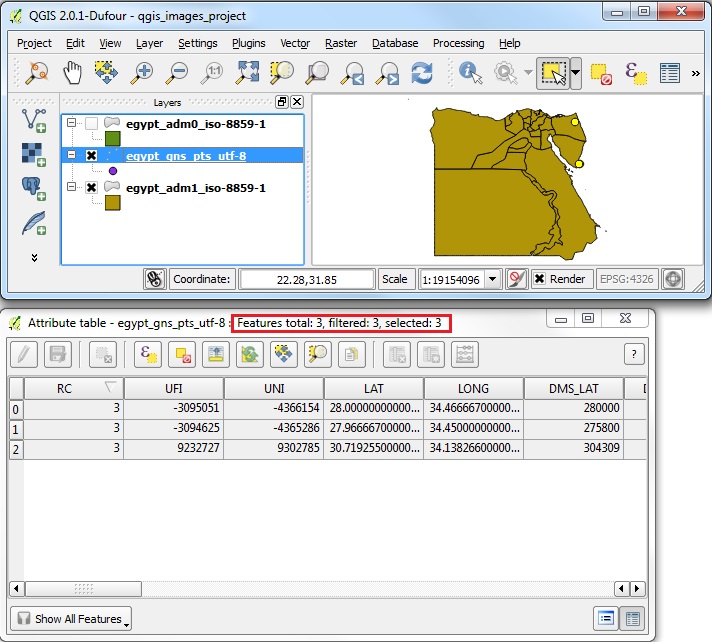
The COLUMN FILTER and QUERY BUILDER are essential User Interfaces that provide limited subsets of the querying and filtering functionality of QGIS. You can also make use of QGIS finer grained querying power, using the EXPRESSION tool user interface, or by running your own custom Python scripts with the same operators and functions. Let's see how the same query is built using EXPRESSION. First, reset your attribute table on the lower left drop-down menu to SHOW ALL FEATURES. Then click on the EXPRESSION button to open the SQL Expression window.
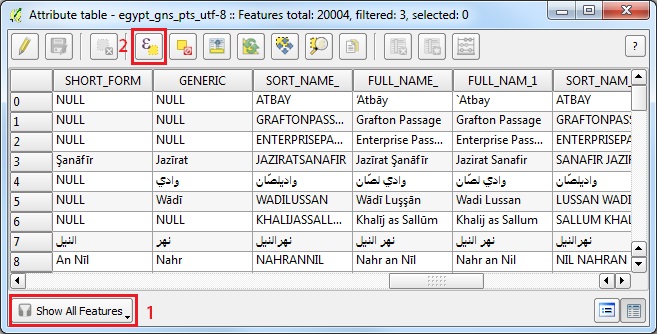
If you know which query operator, conditional or function you want to use, you can type it into the search bar above the FUNCTION LIST. For example, we can try typing LIKE. When you type LIKE into the search box, the term will be shown under it's parent group, OPERATORS. Double-click on LIKE in the FUNCTION LIST to add it to your Expression form. You will see that a warning appears below the Expression form, indicating that the Expression is Invalid. This is very useful to see if you are constructing valid query expressions. Now move the cursor to the beginning of the Expression form, before LIKE, so we can add the FIELD NAME to be searched in.
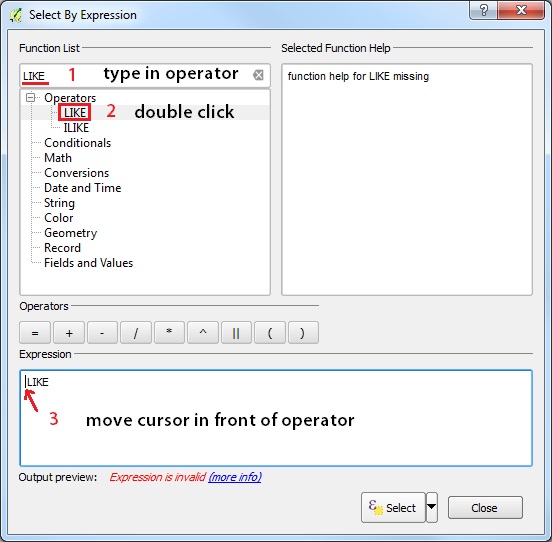
First, be sure to REMOVE or DELETE the word LIKE from the Search Box above the function list! (Otherwise the Function groups will not be expandable trees because they do not contain the term LIKE.) Now expand the list of FIELDS AND VALUES in the Function List. Scroll down to find the field called FULL_NAME_1 and double-click on it. The Field Name should be added to the beginning of the Expression Form. Now move the cursor to the right side of LIKE and type the search term within SINGLE QUOTES, and with the wildcard % before and after the term: '%Passage%'. Your expression should read: "FULL_NAME_1" LIKE '%Passage%' The Expression validation warning will disappear if this query expression is valid.

Click SELECT to run the query. If you return to the Attribute Table window, you should now be able to use the drop-down on the lower left to SHOW SELECTED FEATURES, and only see the two records that have the string Passage in FULL_NAME_1 field. Similarly if you DESELECT ALL, and return to the EXPRESSION tool to search for Pass, you should find three rows selected.
QGIS provides the full extent of REGEX functionality, including the ability to run complex queries, maths, and search-replace operations. Just to get started, let's run a similar query with the regex function.
Note, the sample query above will find only ONE record, because the term Pass is followed by the $ flag, which indicates it is the END of the text. If you DESELECT and try '.Pass.' you should find three records, etc. Regex in QGIS should follow the Python Regex rules. 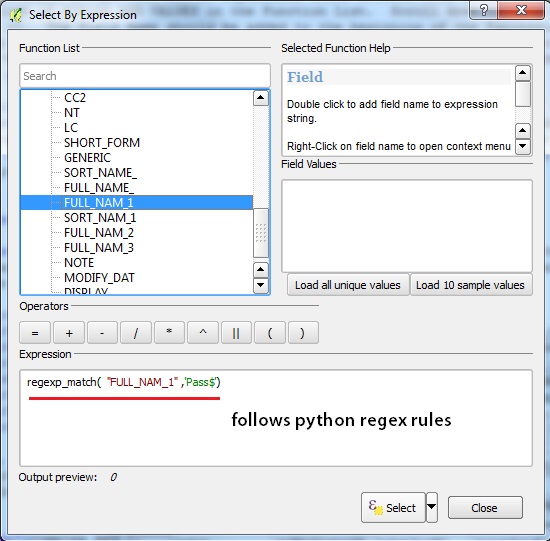
Next up is the section on IMPORTING DATA LAYERS
|
